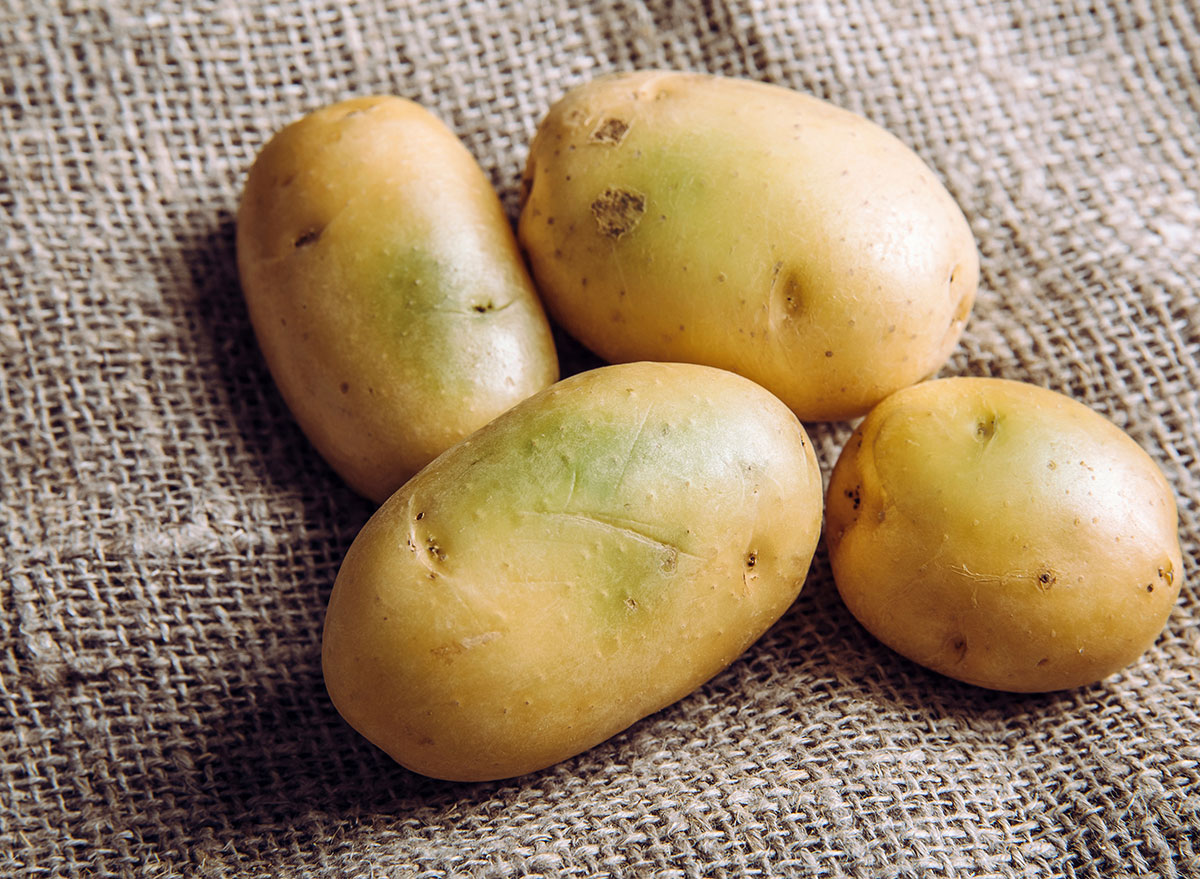You Should Never Eat a Potato That Looks Like This, Says Science

There are more than 4,000 varieties of native potatoes in the world? Aside from russet potatoes, maybe you also enjoy cooking with more colorful varieties as well, such as sweet potatoes, blue potatoes, Japanese purple sweet potatoes, or even red skin potatoes—the list goes on. However, there's one color you should avoid eating at all costs: a green potato.
No shade to the color green, but no potato that's green should be considered edible. At the very least, if parts of the potato look salvageable, cut the green parts out yourself using a knife. When a potato has green patches, that means it's been infected with a poisonous compound called solanine. If you have ever seen a potato with green sprouts, that's a key sign it's tainted with solanine.
RELATED: 12 Food Safety Rules You're Definitely Breaking
Technically, what gives the contaminated potato its green color is chlorophyll, and while that pigment isn't necessarily going to harm you, it should give you the signal to toss it out. When a potato is exposed to light, it will produce chlorophyll, which may also result in high levels of solanine. The substance is a neurotoxin, meaning that if it's ingested, it can give you a headache or even cause you to become nauseous. If ingested in larger quantities, it can cause fever, slow breathing, and pain in the stomach.
It's important to note that the toxin is naturally found in all potatoes, but when the levels of it exceed 0.1% in the potato, that's when serious problems can occur. But even if you tried to eat a green potato, you'd probably spit it right out. This is because solanine has an unpleasant bitter taste, so your body would likely save you from consuming the rancid vegetable before it even goes down the hatch.
Bottom line, make sure to keep your potatoes away from the sun so you don't end up having to throw them out.
For more, be sure to check out 30 Best Cooking Tips, According to Experts.








